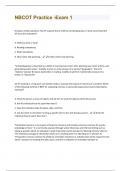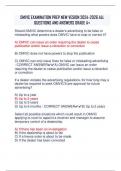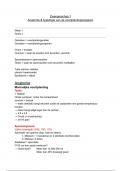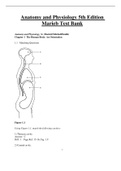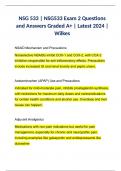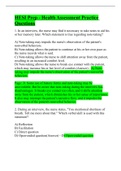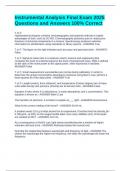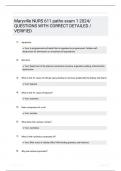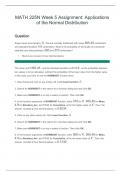Exam (elaborations)
NBCOT Practice -Exam 1 Latest(2024/2025) Questions and Answers 100% Correct.
- Course
- Institution
During an initial evaluation, the OT suspects that a child has somatodyspraxia. In what area should the OT focus the evaluation? A. Ability to print or write. B. Reading competency. C. Math calculations. D. New motor task planning. - D. New motor task planning. "Somatodyspraxia is described a...
[Show more]
